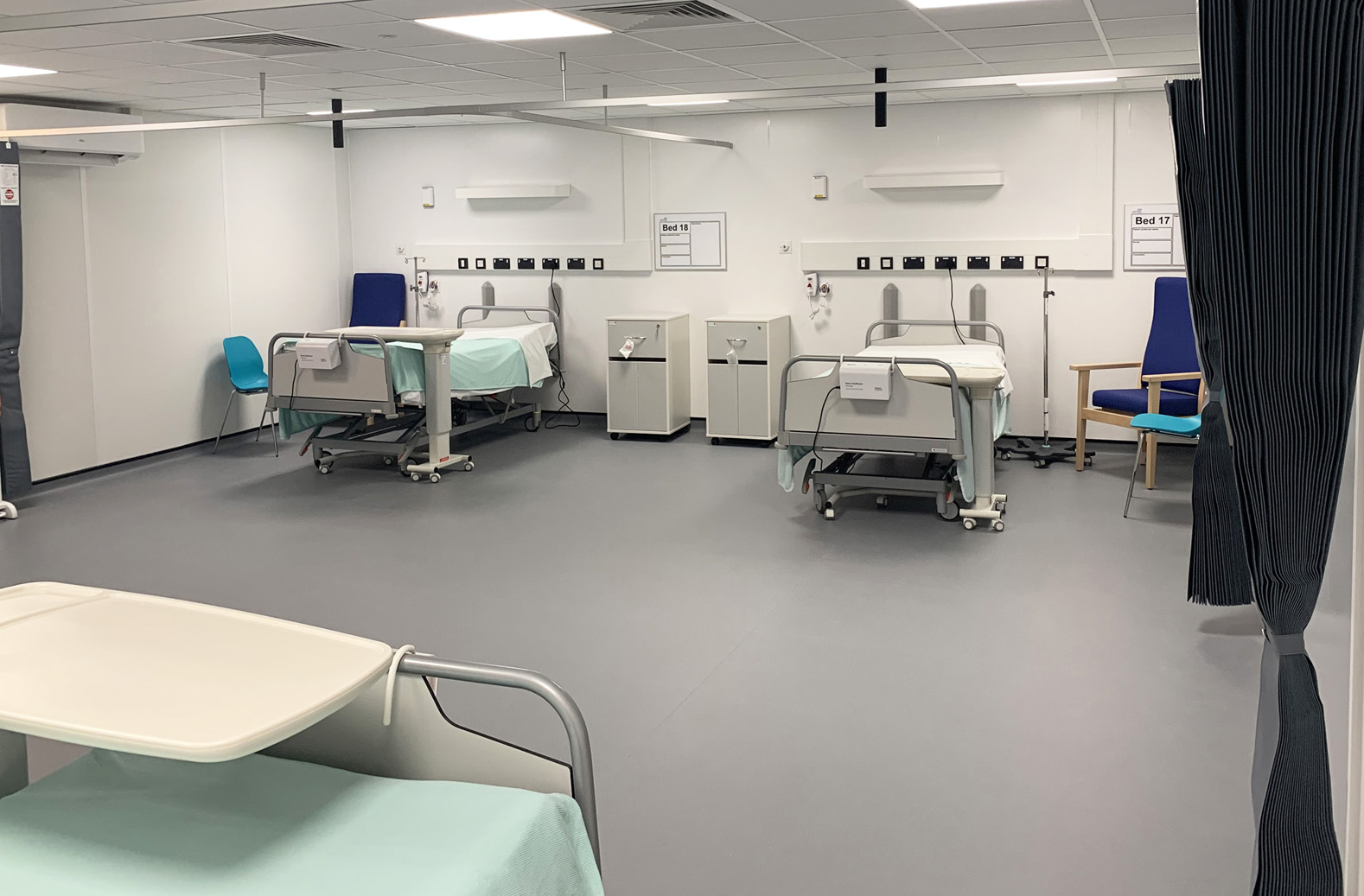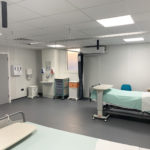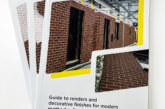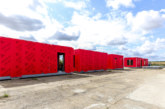Premier Modular, one of the UK’s leading offsite construction specialists, has delivered a new, purpose-designed £1.7m ward building at North Middlesex University Hospital, reducing the programme to just six weeks on site to help the Trust rapidly expand ward capacity to re-start elective care services.
There was an urgent requirement for new in-patient beds following a surge in demand for hospital services during the COVID-19 pandemic combined with the peak winter period. As part of the hospital’s centenary celebrations and as a tribute to Captain Sir Tom Moore, the Trust have named the new ward after the army veteran who left a wonderful legacy through this charity work.
Procured through NHS Shared Business Services, Premier was appointed to design, manufacture, and install a bespoke ward building to be in use for around 18 months. Importantly, the building had to be designed in compliance with rapidly evolving guidance for infection control in the midst of the COVID-19 pandemic.
The revised design requirements included maintaining a space of 2m around each patient bed, increased access to handwashing, management of control routes around the building to facilitate social distancing, and to accommodate increased use of PPE.
This was a complex scheme that had to be delivered during a lockdown and just 16 weeks from order to handover. Working seven days a week, Premier was able to reduce time on site from around 10 weeks to just six weeks, to bring the building into use as fast as possible for critical patient service provision.
Short build programme
Commenting on the project, Chris Kelly, Estates Development Manager at North Middlesex University Hospital, said: “The Premier team understood the vital importance and urgency of this project from the outset and as a result worked harder and faster to make it happen. There was incredible pressure to deliver this building to such a short programme. Premier grasped our mindset as healthcare providers and the real world impact this building would have on our patients waiting for treatment. Despite the pressures, the Premier project team was constantly collaborative, flexible and worked as a genuine partner to the Trust.”

“Design choices had to be made in the context of budget, programme, and the incredibly fast changing healthcare environment. This demanded an exceptional understanding of the issues and the technicalities of compliance to rapidly developing COVID guidelines for infection control. Their team’s positive approach, practical support, attention to detail, communication, focus and enthusiasm to get the job done were remarkable and enormously appreciated.”
“Their team was sensitive and respectful of the hospital environment at all times and of our need to maintain services and the highest standards of patient care throughout. We have had really positive feedback from patients about the new facility and hope to work with Premier on future projects.”
Building design
The Captain Sir Tom Moore Centenary Ward was designed to maximise clinical space in line with the latest COVID-19 infection control requirements. It accommodates 20 beds for patients recovering from surgery and has been configured as six three-bed wards and one two-bed ward.
The self-contained facility was fitted out with medical gases, electrics, IT infrastructure, CCTV, fire alarms, nurse call systems, door access controls, heating, hot water supplies, and advanced air handling and extraction.
Three nurse stations are located in the central corridor and the building is linked to the main hospital to maintain efficient patient flows.
Other facilities include assisted bathrooms for each ward, pantry for the preparation and serving of up to four meals per patient per day, dirty and clean utilities, staff rest room and changing facilities, reception to welcome patients and cleaner’s room.
A Premier hire solution was chosen by the Trust for this project, to fund the building out of revenue streams for maximum cost efficiency. It was successfully delivered on time and on budget.
The hiring of modular accommodation is a fast and flexible way for healthcare providers to expand capacity or relocate services, particularly on constrained hospital sites. The approach also gives NHS trusts greater flexibility as the facilities can be dismantled and removed if local needs change.
Buildings to accommodate wards and ancillary services can be delivered in a fraction of the time of a site-based construction solution. Critically, purpose-designed facilities can be installed on hospital sites with far less disruption to patient care.









